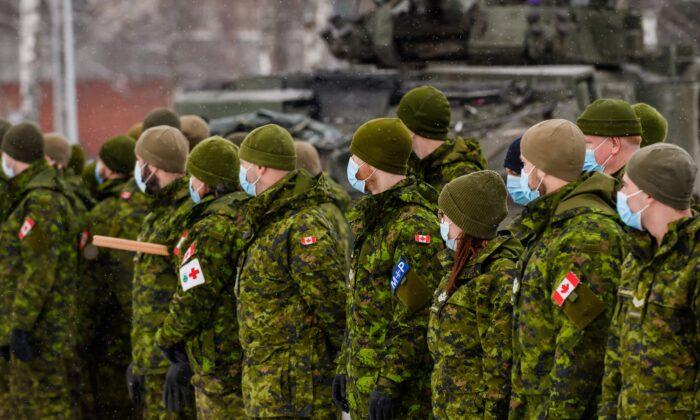Canada’s defence spending has come under the spotlight with Russia’s invasion of Ukraine, but experts say the issue is more complicated than simply meeting the NATO benchmark of 2 percent GDP to solve the issue.
For the experts testifying before the Standing Committee on National Defence on March 21, increasing the budget without a defence review and an articulated strategy will not solve Canada’s military deficiencies.
“It’s not really a question of increasing the defence budget per se,” said professor James Ferguson of the Centre for Defence and Security Studies at the University of Manitoba.
“The question is how much, over what period of time, and particularly dedicated to what acquisitions—independent of operations and maintenance, and independent ... to the problems of recruitment. If you want to punch this money into or funnel it into expanding the Canadian Armed Forces, recruitment and retention is a big problem, and you’re probably in a real difficulty.”
Ferguson said that as much as governments want to avoid it, a defence review is needed to address the issue.
With the purpose of the committee meeting being to address threats to Canada and the ability of the Canadian Armed Force (CAF) to meet those threats, Ferguson said in his opening remarks that Canada has a low capability to defend against Russian missiles due in part to an obsolete North American Aerospace Defence Command (NORAD) warning system.
“It’s very clear in my mind that what was committed in 2017, in the absence of any funding commitment to NORAD modernization and North American defence modernization, that that’s the key area you want to go. ... Whether that’s the case, I think it’s important that the government makes this clear.”
Defence Minister Anita Anand told the Ottawa Conference on Security and Defence earlier this month that a “robust package” for NORAD modernization would be announced shortly.
The Liberal government has also hinted at increased defence spending since Russia invaded Ukraine on Feb. 24. Canada currently commits 1.39 percent of its GDP to defence spending, well below the NATO target.
But experts testifying before the defence committee said that target is not really relevant.
“Let’s recognize that the 2 percent increase when it was created by NATO is a political target,” said Robert Huebert, political science professor at the University of Calgary.
“We need to have an ability to go beyond just simply saying, ‘OK, 2 percent, 1.9.’ Those are numbers, they don’t mean anything. But if you have a strategic knowledge within the ongoing ability at the highest levels to understand the types of threats that we’re responding to, and to be able to respond nimbly, that in many ways actually goes further than just setting artificial numbers in terms of what you are doing.”
Anessa Kimball, political science professor at Université Laval, also said that the 2 percent target is “clearly political.”
“[It] does not come from any sort of quantitative analysis. It doesn’t come from any sort of strategic analysis or anything like that,” she said, indicating this assessment is based on extensive research on NATO burden-sharing policy.
“As some of my other colleagues have said, [the 2 percent] doesn’t really say very much about what you’re actually doing.”
An increased focus on defence was until recently not an objective of the government.
The closest theme appears in the last segment of the speech with the sentence: “In the face of rising authoritarianism and great power competition, Canada must reinforce international peace and security, the rule of law, democracy, and respect for human rights.”





